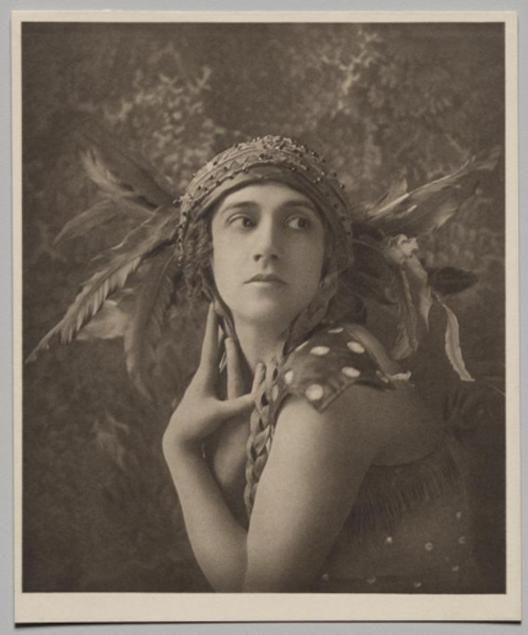
Tamara Karsavina in the Firebird, from Studies from the Russian Ballet,
1911. Emil Otto Hoppé (British, 1878–1972). Photogravure; image: 17.2 x 14.5 cm. The Cleveland Museum of Art, Sundry Art—Photography Fund, 2019.40. © E. O. Hoppé Estate Collection / Curatorial Inc
Among the many offerings currently on view, the Cleveland Museum of Art has two new collections opening to the public in November.
The first, “Modern Impressions—Light and Water in Chinese Prints,” which opens today and runs through May 7, showcases a diverse assortment of contemporary Chinese printmakers varied in both gender and geography.
These printmakers bring a modern take on the art while exploring the print medium with innovation and ingenuity using a variety of formats.
Invented around 700 in China, printmaking has the longest continuous print history in the world. China was also the first to implement the douban (assembled block) technique, by which the artist produces color printing by pressing separately cut woodblocks for each color.
“Whether insects caught in amber, sparkling waterfalls under the moon, or abstract riverscapes – with just a wooden block, a knife, ink and paper – contemporary Chinese printmakers are masters in merging their subjects into mesmerizing light and atmosphere, “said Dr. Clarissa von Spee, Chair of Asian Art.
During this process, color setting from the draft illustration is imitated and carved into small wood blocks before being fixed into place with a paste.
The printmaking lineage eventually made its way into Western art, but one almost can’t think of it without considering its Chinese origins, techniques and aesthetics.
“With over a thousand years of print history, it is astonishing to see how today’s Chinese printmakers continue to create fresh and cutting edge images,” said Spee.
The second forthcoming exhibition — "Photographs in Ink" — opens later this month, on Nov. 20, and will run through April 2, 2023 in the Mark Schwartz and Bettina Katz Photography Galleries. As the title suggests, images made in printer’s ink rather than produced in the darkroom or digitally are the focus of this exhibition.
“Photographs in Ink explores how artists have responded to the abundance of published photographic images that have saturated our daily lives from the 1850s through the early 2000s. The exhibition presents two intertwined narratives: the use of these processes to widely disseminate images and the adoption of them as content and aesthetic choice by fine artists. These stories are told through historical and contemporary works of art by artists from Eadweard Muybridge and Alfred Stieglitz to Andy Warhol, Sigmar Polke, Carl Pope Jr. and Lorna Simpson," CMA said in a release.
Patterns of dots, lines and grids formulated in ink convey an image to our eyes through the tonal gradation from grey to white. Contemporary fine artists value some of these techniques for their organic qualities and returned to these methods in order to preserve these techniques, which were also regarded as precious by pictorialists such as Clarence White and Alvin Langdon in what was known as photogravure.
Photogravure is defined by the photo-mechanical process of using a copper plate, which is ‘grained’ and then covered with a light-sensitive gelatin tissue that's been exposed to a film positive. The subsequent etching produces what’s called an ‘intaglio plate,’ which can then be used to produce a photograph. The lines appear more like a drawing compared to modern photographic practices. The results are beautiful in their distinct tonal range and eloquent presentation.
“Since the invention of the medium, the majority of published photographs have been printed through photomechanical processes—images made in printer’s ink rather than produced in the darkroom or digitally,” said Benjamin Levy Guest Curator, Ph.D. Candidate in Art History, Case Western Reserve University. "Photographs in Ink explores how artists have responded to the abundance of published photographic images that have saturated our daily lives from the 1850s through the early 2000s.”
For this exhibition CMA combines recent acquisitions and rarely seen works from the museum’s holdings, along with loans from several local collections.

